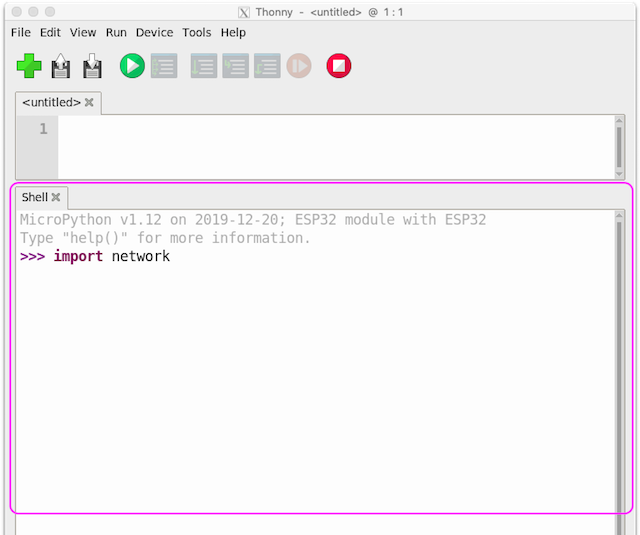
It makes the Java Processing jars available to the CPython interpreter using JPype. Py5 is a new version of Processing for Python 3.8+. Note that module mode requires an import py5 and run_sketch() line, and py5. As an example, you can try this code: import py5 def setup (): py5. To run a py5 module mode sketch, deactivate/uncheck py5 > Imported mode for py5 first so that Thonny returns to its normal run behaviour (for running any Python script). NOTE: This mode also runs static mode sketches (when you don't need a draw() function for animation).Ĭlick the stop-sign (🛑) button in the Thonny toolbar to stop your sketch. Here is some code: def setup (): size ( 300, 200 ) rect_mode ( CENTER ) def draw (): rect ( mouse_x, mouse_y, 10, 10 ) Test out an imported mode sketch by clicking the green play button (or using the F5 or Ctrl+R keyboard shortcuts).
#THONNY IMPORT MODULE CODE#
When the py5 Imported mode for py5 option is checked, Thonny can run your py5 code. You can apply those settings in one simple step using py5 > Apply recommended py5 settings There are several Thonny settings that I recommend you apply for working with py5 (including a Processing 4 inspired theme, Kyanite). You'll be notified once this process completes.
#THONNY IMPORT MODULE DOWNLOAD#
Thonny only needs to download JDK the first time you switch to imported mode. When you've restarted Thonny, select py5 > Imported mode for py5 -Ĭlick Proceed to download, extract, and set up JDK-17 (if you need to know: the plug-in installs JDK in the Thonny user-config directory).
#THONNY IMPORT MODULE INSTALL#
Then search for and install the thonny-py5mode plug-in. If you already have some version of Thonny that includes Python 3.8+ on your computer, you can skip straight to step 4.ĭownload and install the Thonny 3.3.7 -alt version of the Thonny IDE (for Python 3.9 support) from /thonny/thonny/releases/tag/v3.3.7: Thonny-py5mode is a plug-in that installs and configures Thonny for use with py5, a Python (3.8+) framework that leverages Processing's core libraries. This simply plays the mp3 file with an external player.Use the Thonny Python IDE as a Processing PDE alternative for creative coding. This requires you to have some kind of audio player installed on the terminal. You can also play sounds natively on your system. The module doesn’t seem to have been updated in a while. That means that to play sound with this module, you’d also have to import the gui module Tkinter. For old versions there’s ‘python-tksnack’. You can install it with your package manager: ‘apt install python3-tksnack’. The module snack sound kit can play several audio files: WAV, AU, AIFF, MP3, CSL, SD, SMP, and NIST/Sphere. This module can use PyAudio and ffmpeg underneath. It’s available in the pypi repository (install with pip). You can play sound files with the pydub module. This should work with both WAV and MP3 files. It uses windll.winm on Windows, AppKit.NSSound on Apple OS X and GStreamer on Linux. Implementation is different on platforms.

This doesn’t have any dependencies, simply install with pip in your virtualenv and run! 1 The playsound module is a cross platform module that can play audio files. Related course: Complete Python Programming Course & Exercises Play sound in Python playsound module The audio file should be in the same directory as your python program, unless you specify a path. The main difference is in the ease of use and supported file formats. These solutions are cross platform (Windows, Mac, Linux). There are several modules that can play a sound file (.wav).


 0 kommentar(er)
0 kommentar(er)
